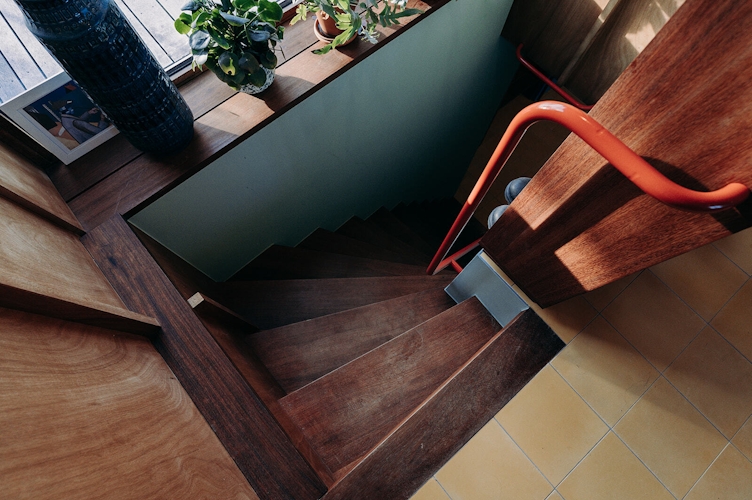

The starting point of the design process was to maintain the unique character of this historical building, which boasted the original optimal orientation and clever layout, and preserve it as much as possible. Most of the wooden interior structure was retained, while the old wooden panels on the facade were replaced with insulation and Thermo-treated wooden planks.
The roof was also renovated, with the roof edge raised slightly so that the newly installed solar panels appeared to be sunken into the roof. This gave a more sober facade and finish, with the aim of integrating the house more with the nature of the dunes. The entrance to the house remained the same, accessible via the brick outdoor staircase.
The challenge is to renovate the house with its history and potential in mind, while maintaining its authenticity. We aim for minimal spatial and visual impact on the environment, but with a maximum positive impact on the residents' experience.
Together with the residents, we adhere to the principle of preserving as much as possible of the original house and integrating it into nature in a modest way. The use of sustainable, natural materials such as wood for finishing enhances that feeling. Additionally, the house is half embedded in the dunes, making it seem more compact but still providing the comfort of two floors.
Smart architectural interventions enhance the residents' living comfort in various ways. A garden-side canopy provides a sheltered terrace for relaxing and prevents overheating. The bedrooms on the lower level offer greater intimacy and remain cool during summer. The master bedroom also features an outdoor shower terrace.
Sustainability is at the heart of this home's design. We've installed a geothermal heat pump and solar boiler system to produce warm water and generate energy from the sun. The surplus energy is stored in a battery pack for later use.








Pictures: Karen Van der Biest
















